1/ Parable of the Planes, Protocinema Emerging Curator Series at NADA Exhibition Space
2/ Saodat Ismailova: To Share a Dream with a River at the e-flux screening room.
3/ A Shapeshifter with a Heavenly Secret
Bix Archer, Noémie Jennifer Bonnet, Greg Brown, Takming Chuang, Morgan King, Shane Smith, Denisse Griselda Reyes
White Columns Online
I
In 2014, upon awakening from the deepest sleep of my life, it seemed as if part of my memory was lost to time forever. Months or years later, I realized it wasn’t lost but transfigured into a new set of memories that hardly bore any resemblance to the past ones. As I slept, my memories rebelled and established their own governing body while already equally inhabiting mine; they desired to take up as much space as possible without negotiating the existence of the present. And occasionally, only if it served their own needs, they would also return to their abandoned, shapeless semblance of the past.
II
For the last few months, my mind has been preoccupied with the question of whether our memories have the capacity to shapeshift; whether memory can, in and of itself, be a catalyst for shapeshifting beyond the body and materiality assigned to it. Oftentimes we assume that shapeshifting as a process must take the form of bodily transformation. The being’s external constitution transfigures while its internal form remains unchanged. For centuries, human imagination has contemplated the nature and potential of shapeshifting through mythology, folklore, speculative fiction, and various forms of popular culture. Shapeshifting has become representative of the human desire to alter oneself in order to be something else, something that would help one acquire a more desirable form of existence in comparison to what one already is or has. On the other hand, stories like Franz Kafka’s The Metamorphosis or Virginia Woolf’s Orlando exemplify involuntary change, forcing a character to grapple with and adapt to the obstacles that follow. In her work Ontology of the Accident, French philosopher Catherine Malabou muses that regardless of the extent of the metamorphoses at play, “it is only the external form of the being that changes, never its nature.” Malabou challenges the separation and differentiation between the physical and the psyche, noting that the transformations of the latter have been regarded considerably less in the philosophical, psychoanalytic and neurological fields.
III
In the same work, Malabou introduces us to the concept of destructive plasticity, a transformation arising out of darkness, which could offer a way to comprehend the psychological shifts that venture into our lives without warning. Such changes, often startling and unwelcome, result in a kind of “distancing of the individual who becomes a stranger to herself.” We try to look back and recognize ourselves in relation to what our memories turned into, but the channel between then and now is hardly mendable. Throughout our lives, our memories morph into something unrecognizable and unfamiliar. For all I know, even if memory is a single unit of remembering, perhaps once recalled it becomes less and less an attempt at reliving or recollecting but engenders a novel way of evolving, unfolding and becoming. Perhaps it is in the transfiguration of our memories that we become shapeshifted into a new existence, a new nature of sorts?
IV
A Shapeshifter with a Heavenly Secret, which borrows its title from Denisse Griselda Reyes’s video piece, is a selection of works from the Curated Artist Registry that offers to take you on a journey of shapeshifting, metamorphoses, alterations and changes to the passage(s) of time, memory, mind and the body. The exhibition’s poetics gesture toward different stages of one’s transformation as they move in dialogue with one another. To awaken from the deep dream with pieces such as Sleeper (2022) and Timekeepers (2022) by Noémie Jennifer Bonnet and dare to follow the whimsical dragon-like creature in Greg Brown’s painting Voyager (2021). To reckon with the ephemeral record of one’s household or a memory of a place with Bix Archer’s Shifting House (2021) and Takming Chuang’s Palace Palace (2021). To conceive of the undetectable or distorted in Being seen (without being seen) (2022) by Morgan King and Faun in Spring time (2021) by Shane Smith. To render one life into multitudes of moments with Denisse Griselda Reyes’s A Shapeshifter with a Heavenly Secret (2021). To confront the change when “you decide to leave the person you were.”
February 3 - March 18, 2023
![]()
![]()
![]()
![]()
![]()




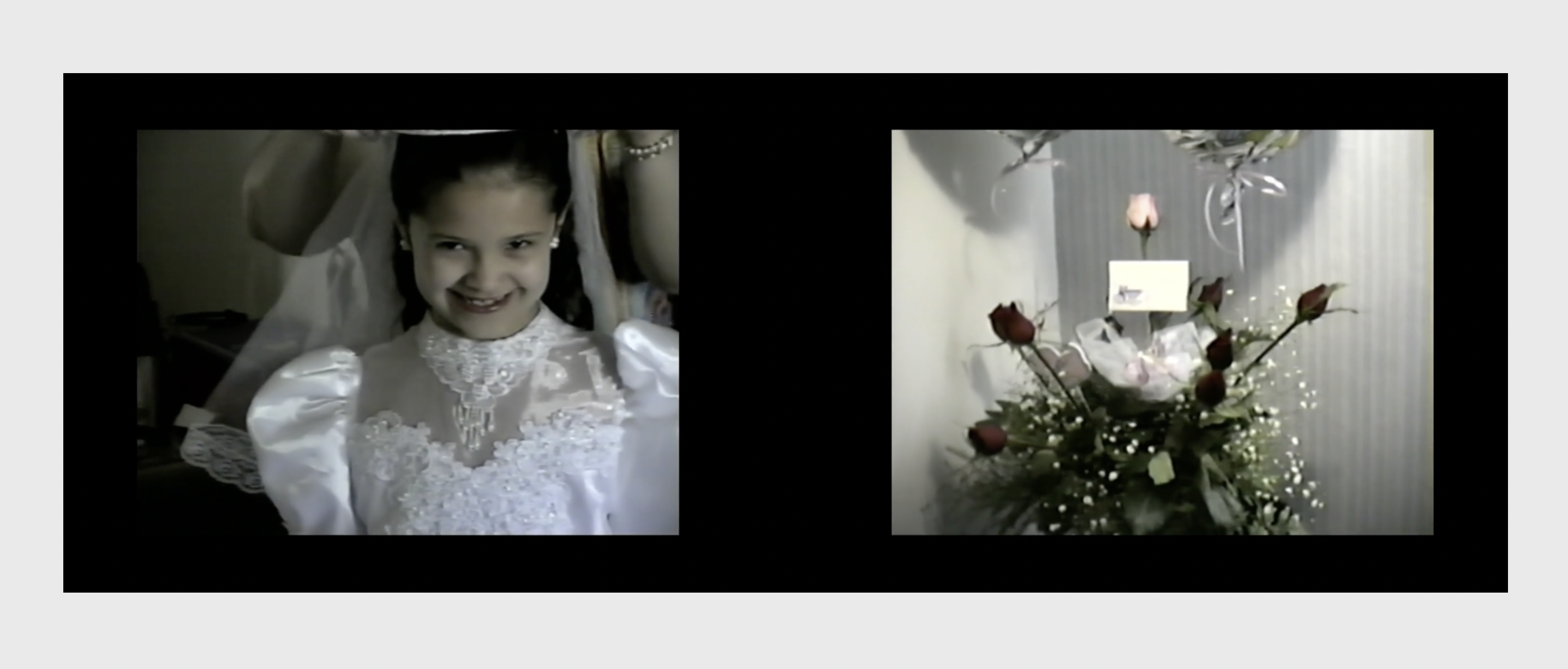
4/ On Transcending Numbness
Golnar Adili, Niki Afsar, Yan Cynthia Chen, Steffani Jemison
Pfizer Building, 630 Flushing Avenue, Brooklyn, NY
On Transcending Numbness is a group exhibition that contemplates the tangled relationship between language and body. It examines the various ways in which four artists—Golnar Adili, Niki Afsar, Yan Cynthia Chen and Steffani Jemison— envision and engage with alternative systems of articulation, as well as investigate and dismantle histories that conditioned their means of expression.
For this exhibition, the central concept of numbness in relation to language and body is akin to connective tissue: to be numb is to be deprived of feelings, emotions and subsequently, words; yet the sensation of numbness is also linked to the body's physical state as a mode of self-preservation. The practices gathered here seek to imagine and employ different mediums of communication, reminding us that there are ways to heal the space of language and to transcend the numbness that comes from the feelings of lacking, incapacitation or precariousness.
In attempts to comprehend her own relationship to language, body and space, Brooklyn-based mixed-media artist Golnar Adili presents the viewer with a series of collages that employ the cutouts of her father’s gestures as captured in photographs after his immigration from Iran to the United States. By cross-investigating the notions of language, mental health and body, interdisciplinary Washington, D.C.-based artist and writer Niki Afsar ponders the reach that language has on our bodily self-perception. New York City-based artist and educator Yan Cynthia Chen posits sculpture as her primary media of inquiry as a response to her personal observations around nonverbal means of communication in an effort to question the complexities of language, body and scale. Brooklyn-based multidisciplinary artist Steffani Jemison, renowned for her contribution to examining the subject of language and body in relation to Black vernacular tradition, produces a body of work that expands on the poetics between body and the process of mark-making. Over the show’s duration, On Transcending Numbness will be accompanied by two respective live performances by Afsar and Chen, as well as feature a self-published selection of excerpts from Afsar’s poem, “Mesl Bolbol/Like a Nightingale.”
Throughout the display, On Transcending Numbness draws attention to the ways language and body are intrinsically interdependent, seemingly acting as an invisible yet vital extension of one another. In virtue of continuing challenges that arise from the inability to find sufficient ways to translate our experiences, stories, traumas and memories, the multifaceted nature of this exhibition aims to reflect on the methods with which the artists challenge these limits.
Read the exhibition catalog essay here.
Golnar Adili, Niki Afsar, Yan Cynthia Chen, Steffani Jemison
Pfizer Building, 630 Flushing Avenue, Brooklyn, NY
On Transcending Numbness is a group exhibition that contemplates the tangled relationship between language and body. It examines the various ways in which four artists—Golnar Adili, Niki Afsar, Yan Cynthia Chen and Steffani Jemison— envision and engage with alternative systems of articulation, as well as investigate and dismantle histories that conditioned their means of expression.
For this exhibition, the central concept of numbness in relation to language and body is akin to connective tissue: to be numb is to be deprived of feelings, emotions and subsequently, words; yet the sensation of numbness is also linked to the body's physical state as a mode of self-preservation. The practices gathered here seek to imagine and employ different mediums of communication, reminding us that there are ways to heal the space of language and to transcend the numbness that comes from the feelings of lacking, incapacitation or precariousness.
In attempts to comprehend her own relationship to language, body and space, Brooklyn-based mixed-media artist Golnar Adili presents the viewer with a series of collages that employ the cutouts of her father’s gestures as captured in photographs after his immigration from Iran to the United States. By cross-investigating the notions of language, mental health and body, interdisciplinary Washington, D.C.-based artist and writer Niki Afsar ponders the reach that language has on our bodily self-perception. New York City-based artist and educator Yan Cynthia Chen posits sculpture as her primary media of inquiry as a response to her personal observations around nonverbal means of communication in an effort to question the complexities of language, body and scale. Brooklyn-based multidisciplinary artist Steffani Jemison, renowned for her contribution to examining the subject of language and body in relation to Black vernacular tradition, produces a body of work that expands on the poetics between body and the process of mark-making. Over the show’s duration, On Transcending Numbness will be accompanied by two respective live performances by Afsar and Chen, as well as feature a self-published selection of excerpts from Afsar’s poem, “Mesl Bolbol/Like a Nightingale.”
Throughout the display, On Transcending Numbness draws attention to the ways language and body are intrinsically interdependent, seemingly acting as an invisible yet vital extension of one another. In virtue of continuing challenges that arise from the inability to find sufficient ways to translate our experiences, stories, traumas and memories, the multifaceted nature of this exhibition aims to reflect on the methods with which the artists challenge these limits.
Read the exhibition catalog essay here.
April 2022
![]()
![]()
![]()
![]()
![]()
![]()
![]()
![]()
![]()
Installation view of On Transcending Numbness, Pfizer Building, Brooklyn, New York.
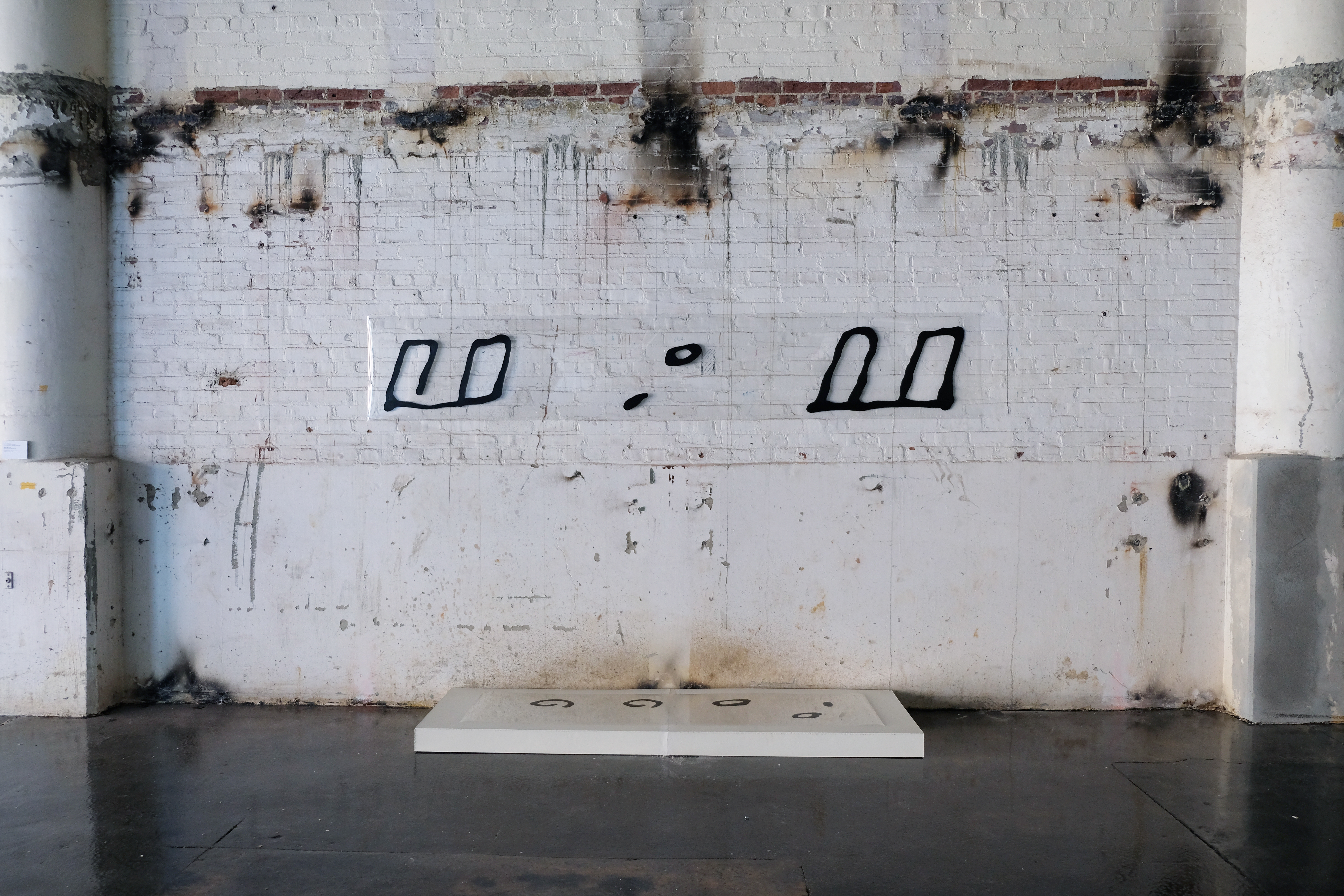

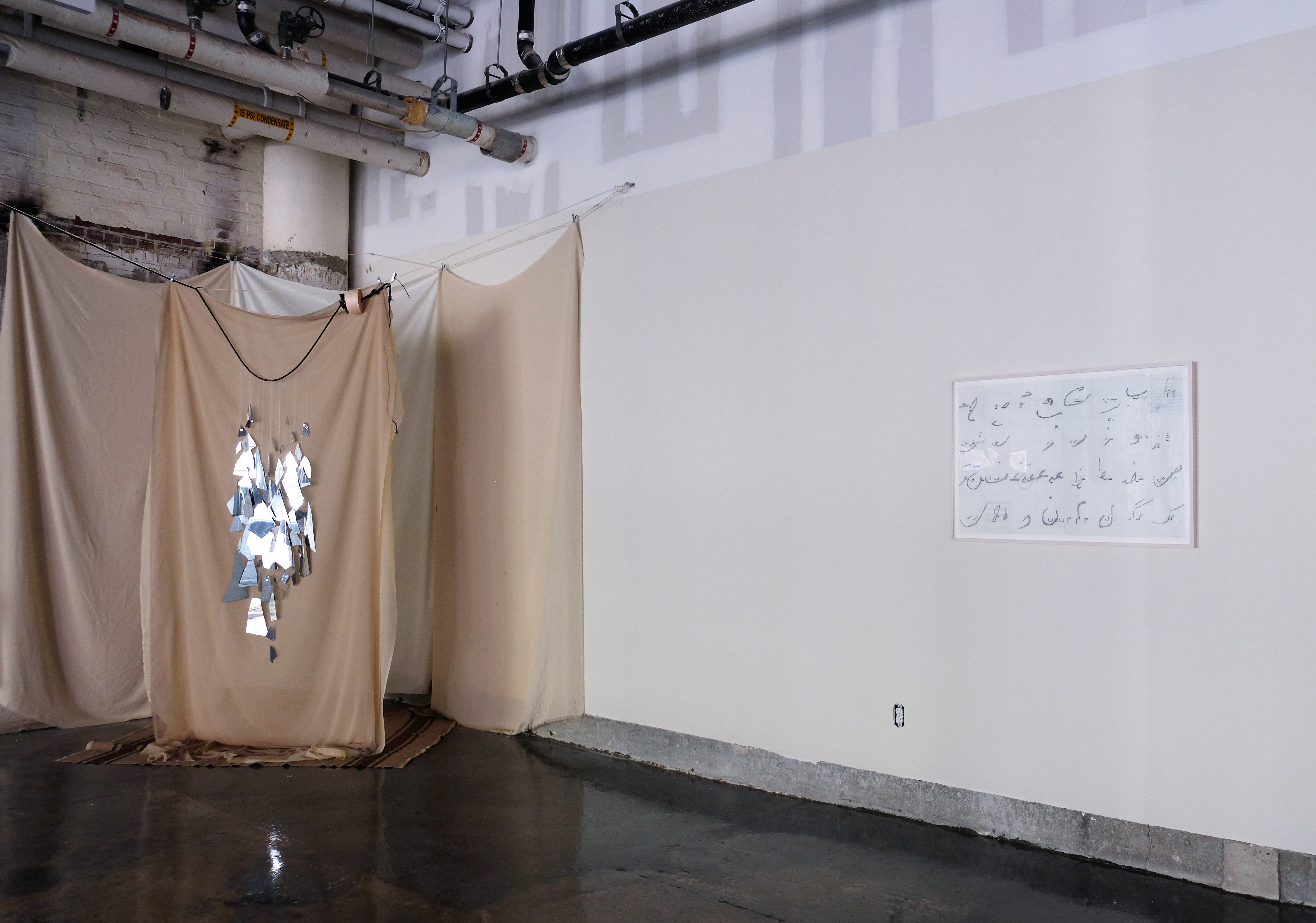

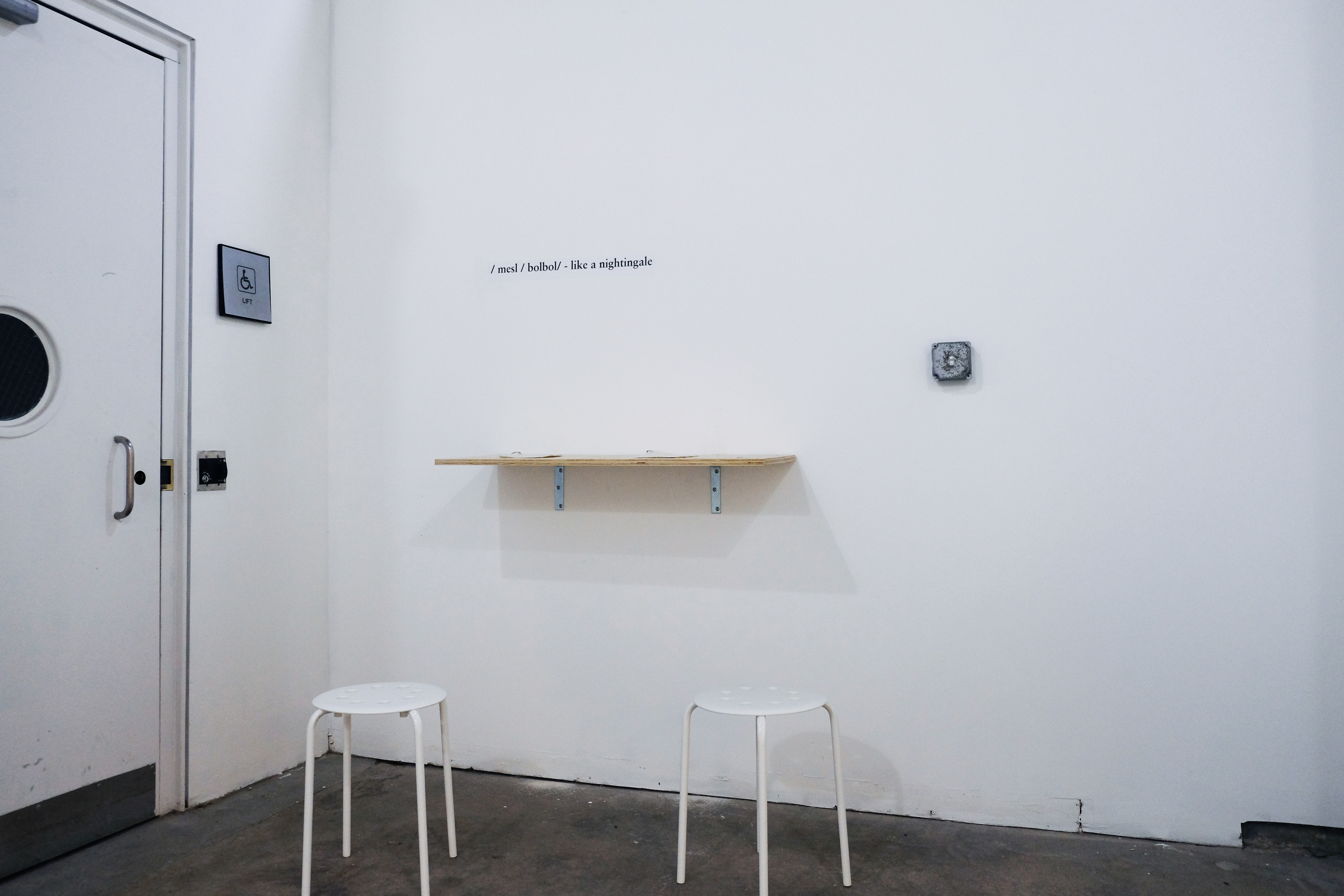

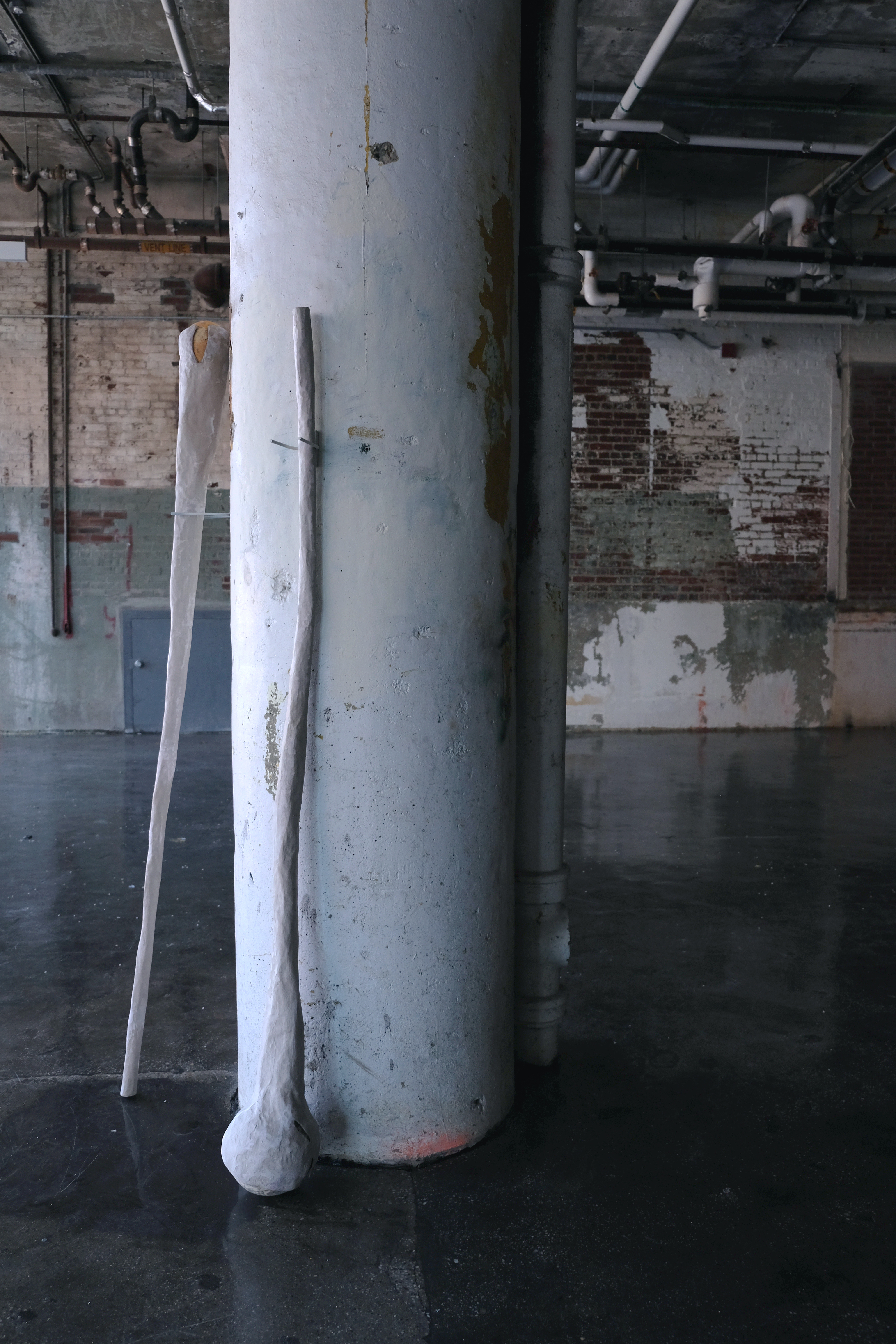
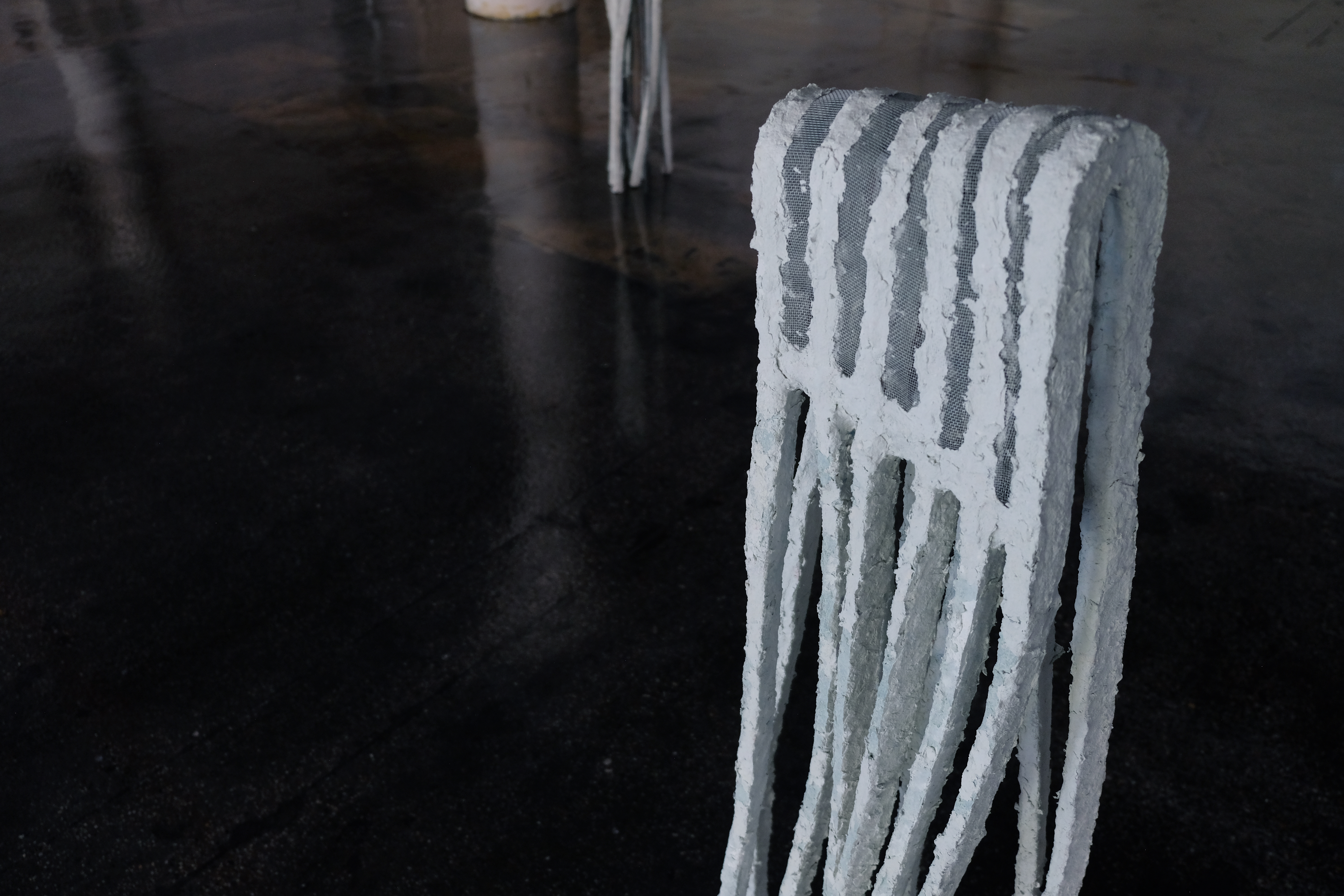
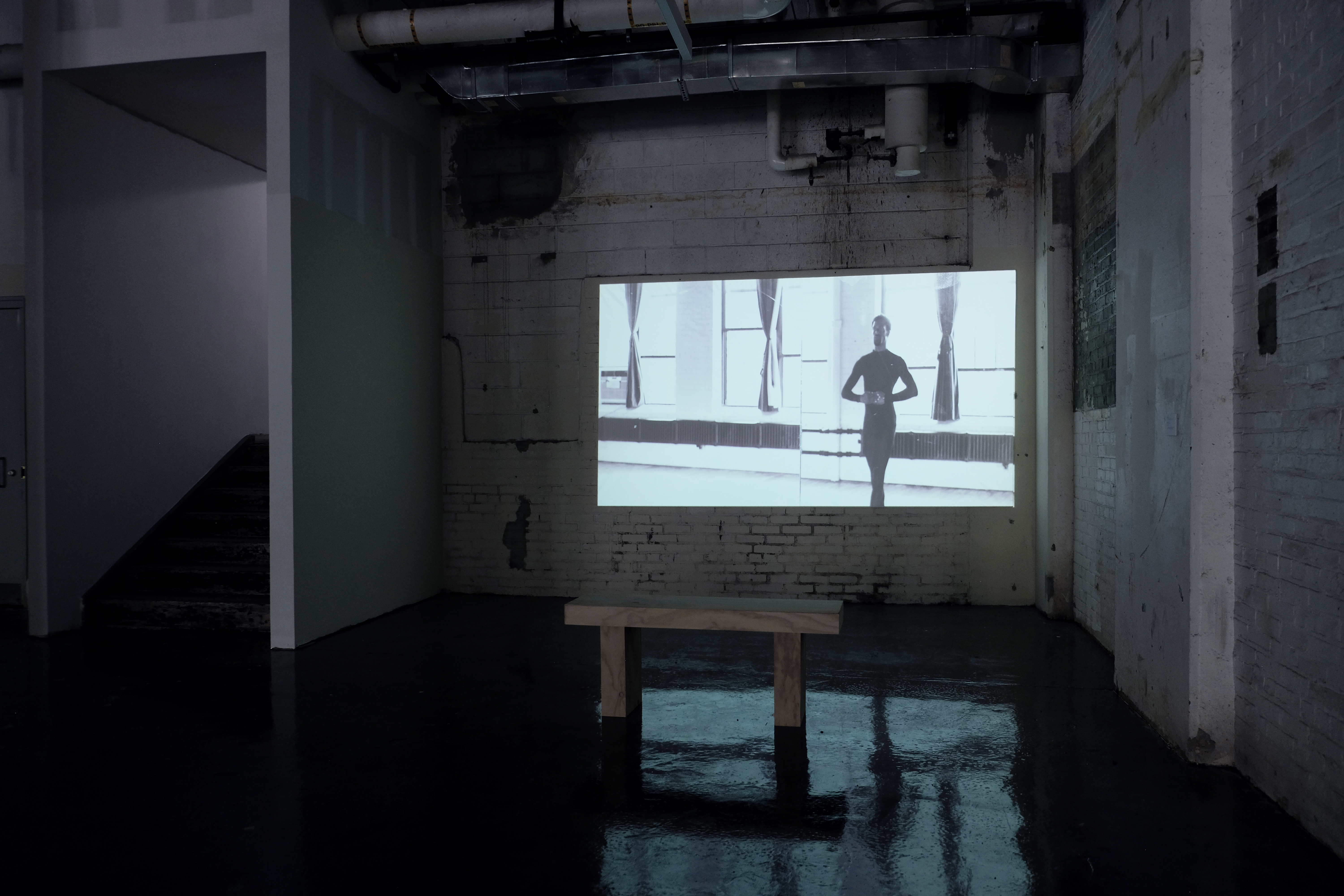
Installation view of On Transcending Numbness, Pfizer Building, Brooklyn, New York.
5/ {i laugh at your promise of happiness}
Blanca Bercial, Ira Konyukhova, Zhang Mengjiao, WE DA PEPO collective
School of Visual Arts, 10th Floor, 132 W 21st St, New York, NY 10011
In the last four years, we have witnessed a drastic increase in harsher border-control policies all across the world: from the “zero tolerance” enforcement implemented by the Trump administration in 2018 to the strict protocols and travel restrictions enacted worldwide in the wake of the ongoing pandemic. The question of borders, particularly bureaucratic managerial processes associated with it in various countries of Europe and North America, pertains to a relevant concern to this day. The same regimes create a paradoxical effect - a bubble of empty promises - by fostering the ethos based on the idea of reaching a better place. {i laugh at your promise of happiness} gathers forms of artistic expression that incorporate humor as a means to confront the larger issue of borders, displacement, and immigration. Humor has often served as a source of refuge; for centuries, the power to evoke laughter sustained our humanity in the painful moments of crisis and hardships. In this selection of works, each artist deliberately deploys humor as a mechanism of reckoning and coping with their own experiences of displacement. Humor for them also operates as a critique of the forms of unjust and deceptive “guarantees,” making it a tool for maneuvering through the endless confinements of bureaucracy. They reject and question the attitudes expected of immigrants to merely be grateful and stay quiet within such systems. {i laugh at your promise of happiness} openly reveals artists’ disagreement and skepticism toward unmet [empty] promises of happiness. The exhibition aims to start a broader conversation around the issues of injustice embedded in border-control policies.
Blanca Bercial, Ira Konyukhova, Zhang Mengjiao, WE DA PEPO collective
School of Visual Arts, 10th Floor, 132 W 21st St, New York, NY 10011
In the last four years, we have witnessed a drastic increase in harsher border-control policies all across the world: from the “zero tolerance” enforcement implemented by the Trump administration in 2018 to the strict protocols and travel restrictions enacted worldwide in the wake of the ongoing pandemic. The question of borders, particularly bureaucratic managerial processes associated with it in various countries of Europe and North America, pertains to a relevant concern to this day. The same regimes create a paradoxical effect - a bubble of empty promises - by fostering the ethos based on the idea of reaching a better place. {i laugh at your promise of happiness} gathers forms of artistic expression that incorporate humor as a means to confront the larger issue of borders, displacement, and immigration. Humor has often served as a source of refuge; for centuries, the power to evoke laughter sustained our humanity in the painful moments of crisis and hardships. In this selection of works, each artist deliberately deploys humor as a mechanism of reckoning and coping with their own experiences of displacement. Humor for them also operates as a critique of the forms of unjust and deceptive “guarantees,” making it a tool for maneuvering through the endless confinements of bureaucracy. They reject and question the attitudes expected of immigrants to merely be grateful and stay quiet within such systems. {i laugh at your promise of happiness} openly reveals artists’ disagreement and skepticism toward unmet [empty] promises of happiness. The exhibition aims to start a broader conversation around the issues of injustice embedded in border-control policies.
March 2021
![]()
![]()
![]()
![]()
![]()
![]()
Installation view of {i laugh at your promise of happiness},
School of Visual Arts, New York, New York.


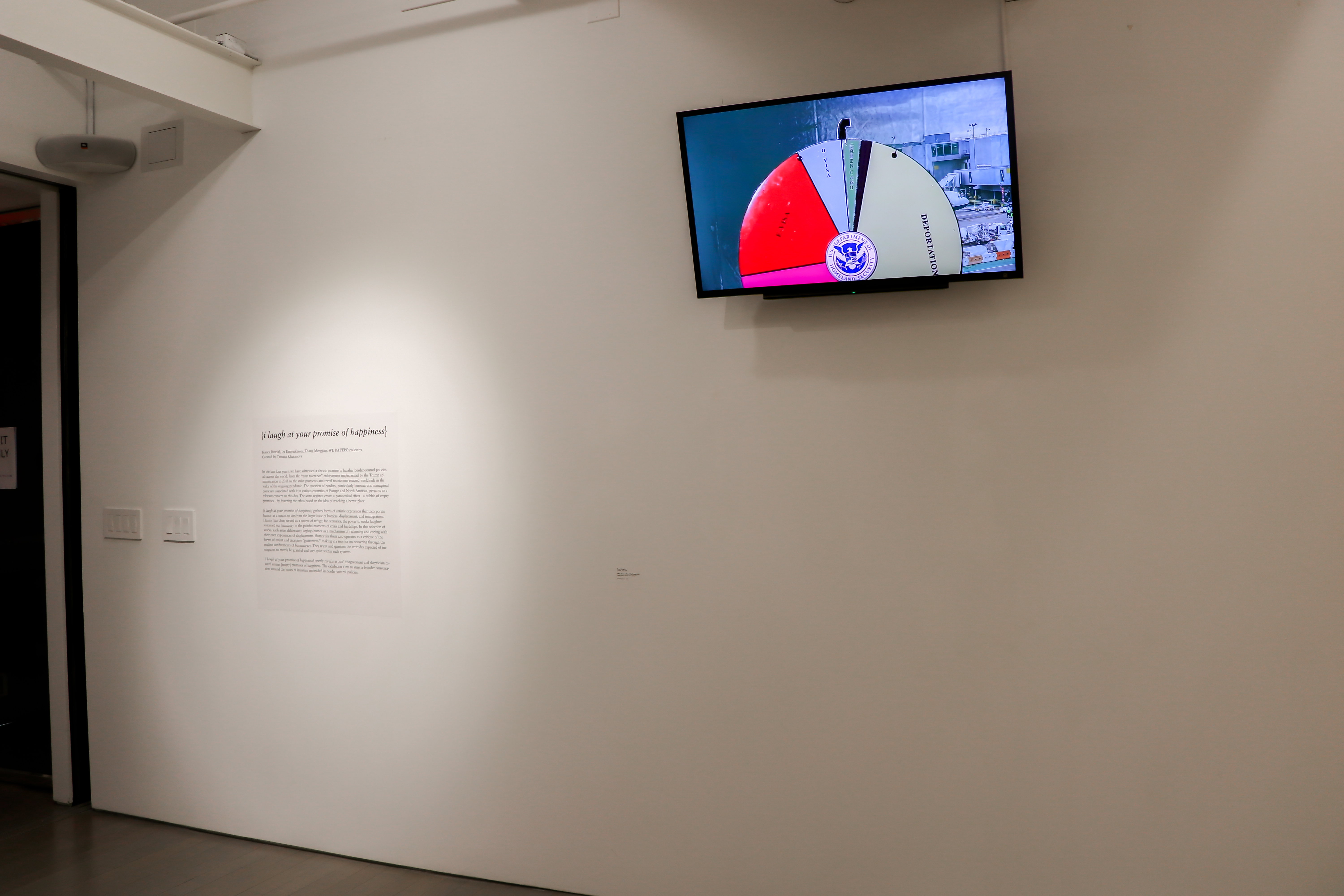
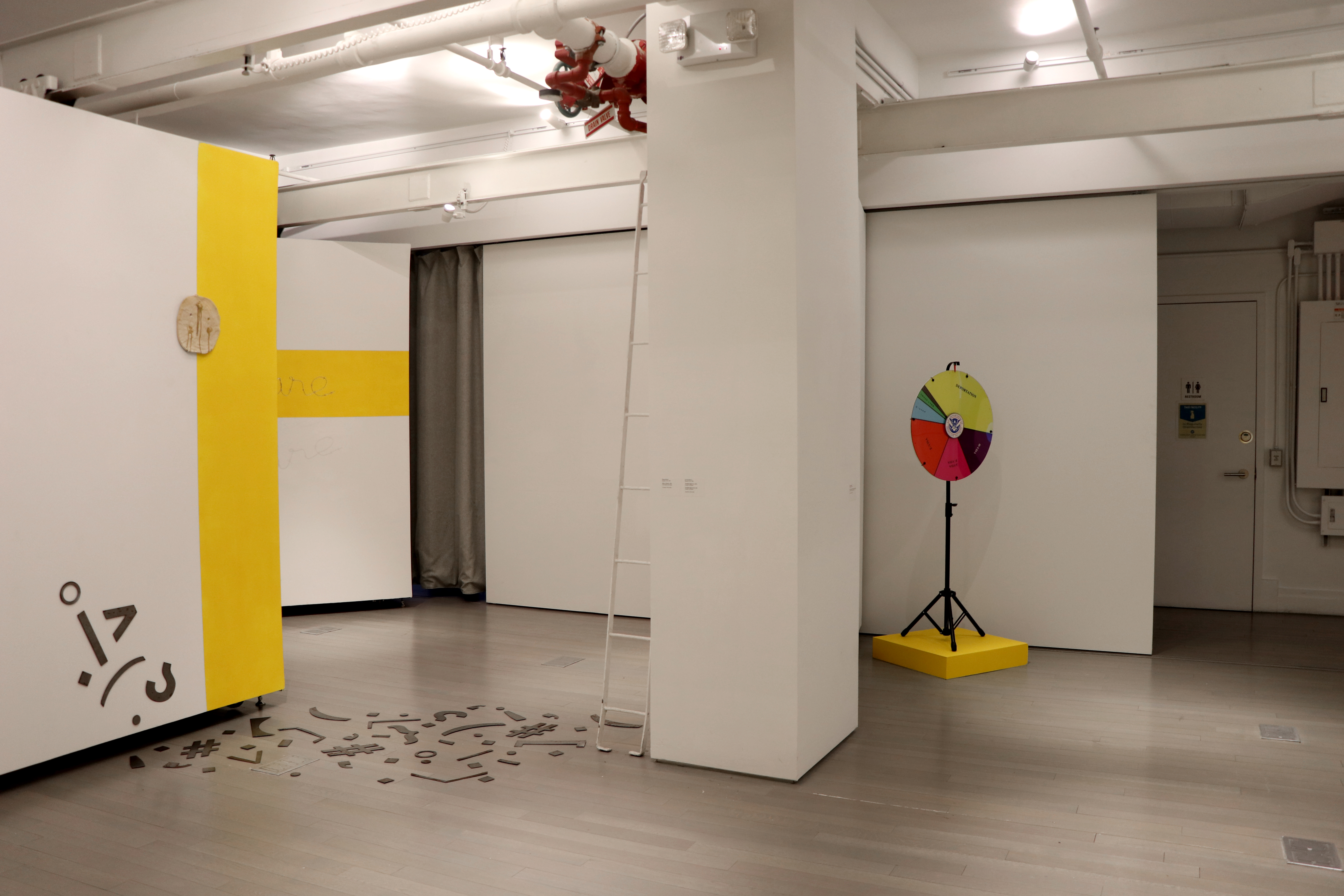

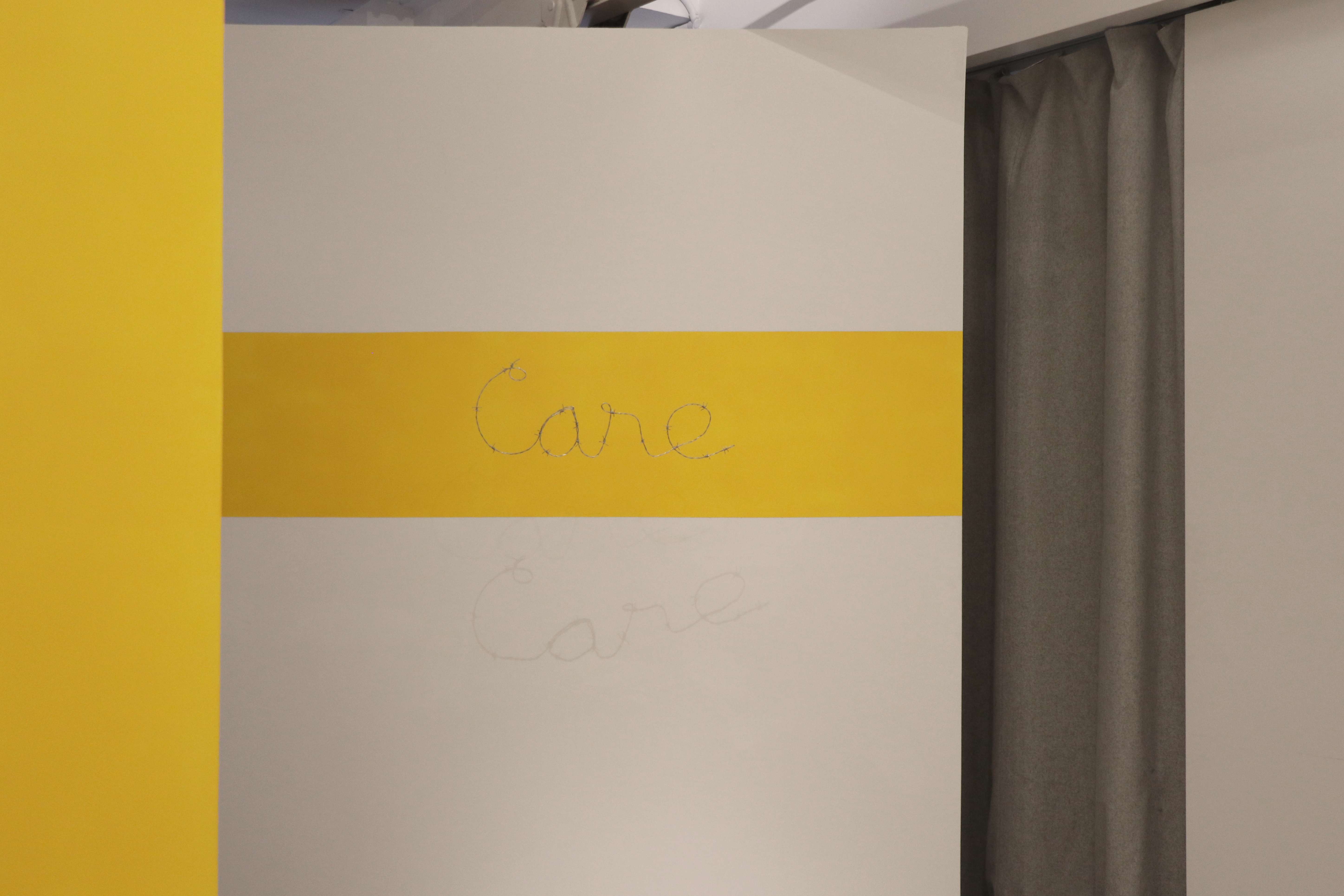
Installation view of {i laugh at your promise of happiness},
School of Visual Arts, New York, New York.
6/ Do-Until Loop Parade
Hyemi Kim, Po Han Huang, Fernando Sancho, Weihan Zhou, Yi Hsuan Lai, Jinglin Wang, Lingfei Ren
Co-curated, organized, and fabricated.
Hosted by the School of Visual Arts.
Do-Until Loop Parade is an exhibition in a box inspired by Duchamp’s Boîte en Valise (1935- 41). Artworks featured in this show hint at the existence of “loops” that have long dictated our psychological, socioeconomic, and political freedoms. These loops are constructs — systems of control — but their origins and logics are obscured. Nonetheless, their effects on our lives are palpable. The exhibition brings together selected works from the 2020 SVA MFA Photography and Video program’s graduating class, which have been selected by their relevance to ideas of cyclicality and isolation.
Read more
Hyemi Kim, Po Han Huang, Fernando Sancho, Weihan Zhou, Yi Hsuan Lai, Jinglin Wang, Lingfei Ren
Co-curated, organized, and fabricated.
Hosted by the School of Visual Arts.
Do-Until Loop Parade is an exhibition in a box inspired by Duchamp’s Boîte en Valise (1935- 41). Artworks featured in this show hint at the existence of “loops” that have long dictated our psychological, socioeconomic, and political freedoms. These loops are constructs — systems of control — but their origins and logics are obscured. Nonetheless, their effects on our lives are palpable. The exhibition brings together selected works from the 2020 SVA MFA Photography and Video program’s graduating class, which have been selected by their relevance to ideas of cyclicality and isolation.
Read more
April 2021
![]()
![]()
![]()
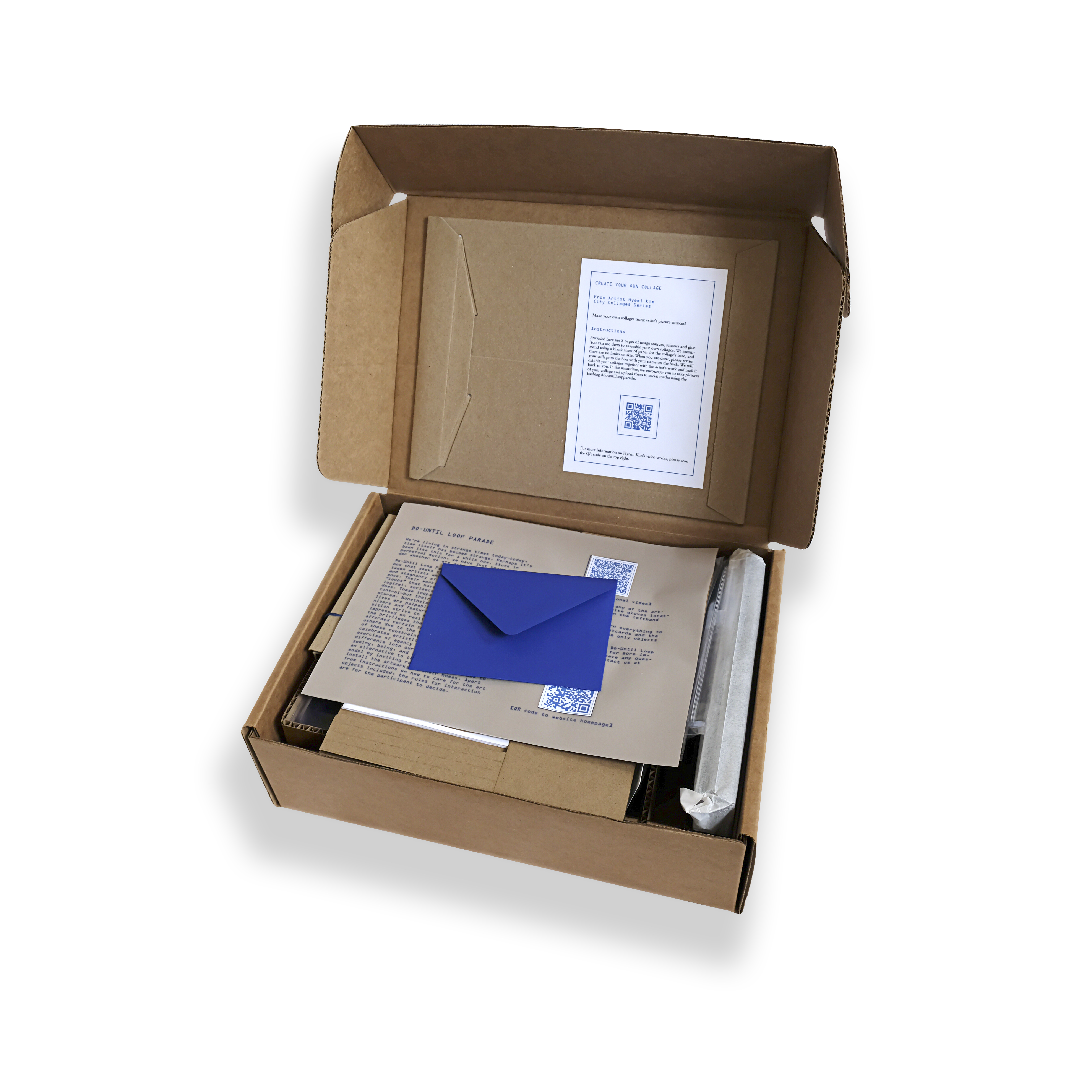

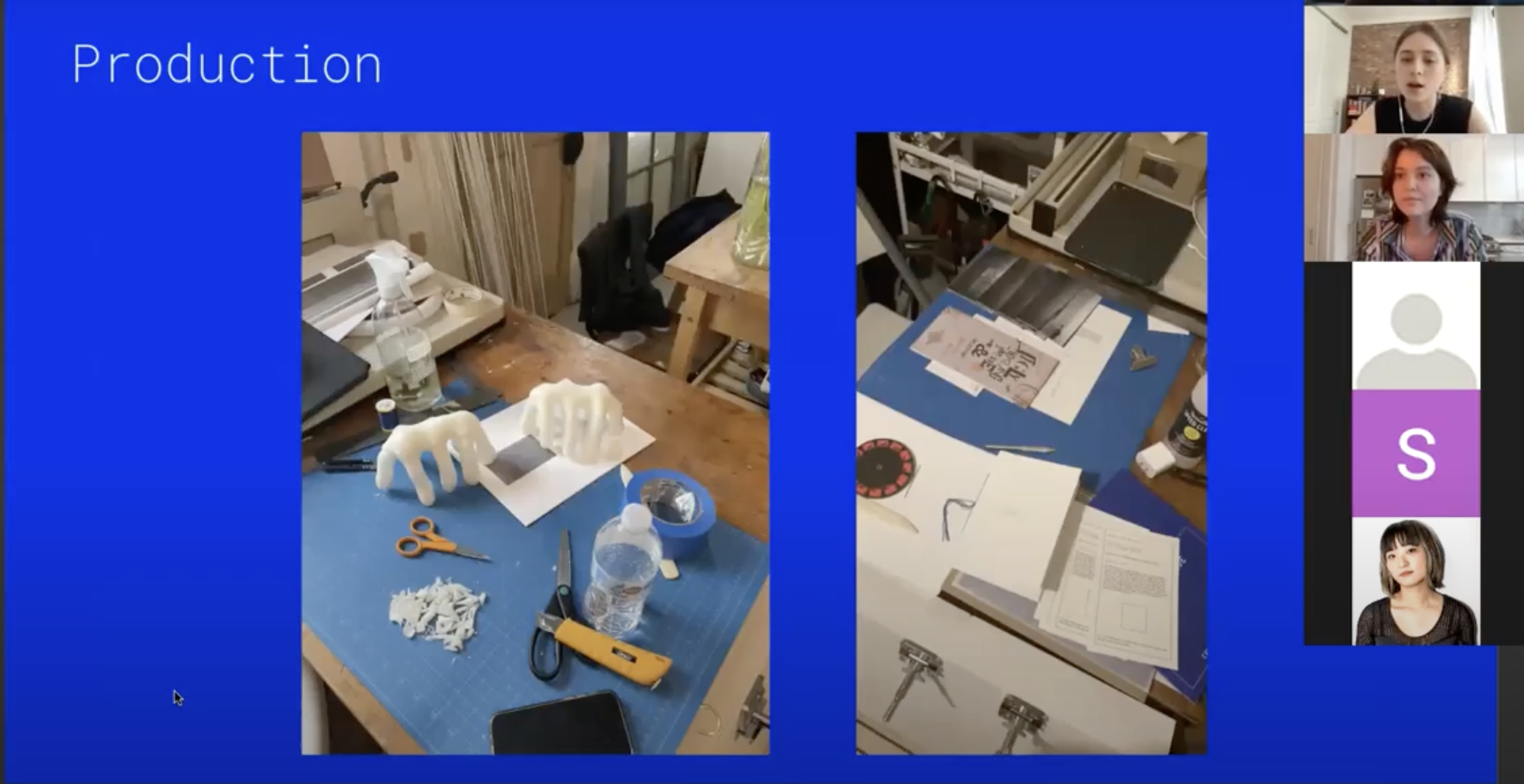
6/ Interviews, talks, and writings
2024
e-flux Podcast: Saodat Ismailova: To Share a Dream with a River
2023
White Columns TALKS: Denisse Griselda Reyes and Tamara Khasanova, March 22.
2021
Бороться за воздух деревья слова
Интервью с коллективом БИШСИ (To fight for air, trees, words), TransitoryWhite.
Бороться за воздух деревья слова
Интервью с коллективом БИШСИ (To fight for air, trees, words), TransitoryWhite, Issue 2, Print.
2020
Аварийное Оповещение (Emergency Alert), TransitoryWhite.
Zero Line of Sight: Interview with Bella Sabirova, TransitoryWhite.
2024
e-flux Podcast: Saodat Ismailova: To Share a Dream with a River
2023
White Columns TALKS: Denisse Griselda Reyes and Tamara Khasanova, March 22.
2021
Бороться за воздух деревья слова
Интервью с коллективом БИШСИ (To fight for air, trees, words), TransitoryWhite.
Бороться за воздух деревья слова
Интервью с коллективом БИШСИ (To fight for air, trees, words), TransitoryWhite, Issue 2, Print.
2020
Аварийное Оповещение (Emergency Alert), TransitoryWhite.
Zero Line of Sight: Interview with Bella Sabirova, TransitoryWhite.